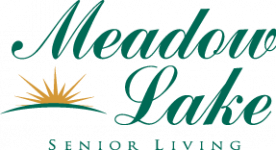May is National Stroke Awareness Month in the United States, and no group is more affected by the impacts of this disease than older adults. The risk of stroke increases with age; incidences double with each decade after the age of 45.
However, there are proactive steps you can take today to reduce your risk. This guide offers actionable lifestyle changes for stroke prevention, giving you the tools to enhance your quality of life and maintain or even improve your health as you age.
Understanding Strokes and Stroke Risk Factors
A stroke occurs when the vital flow of blood to the brain is disrupted. There are two primary types of strokes: ischemic and hemorrhagic.
- Ischemic strokes are caused by a blockage in the arteries that supply blood to the brain. Approximately 87% of strokes are ischemic strokes.
- Hemorrhagic strokes are caused by bleeding in the brain. These strokes occur as a result of a ruptured blood vessel, and as blood accumulates, brain tissue is compressed. These account for 13% of strokes.
Understanding the risk factors for stroke is essential for effective prevention. Knowledge is more than power—it’s the blueprint for health and longevity.
How to Prevent Stroke: Lifestyle Changes for Stroke Prevention
Integrating holistic lifestyle changes is essential to aging gracefully. These simple behavior changes recommended by the CDC can have a dramatic impact on overall health.
Healthy Diet and Exercise
Your body relies on fruits, vegetables, whole grains, and lean proteins to perform at its best. While treats are okay occasionally, a diet built on a foundation of nutritious and unprocessed foods fortifies your body against the risks of stroke.
Exercise also plays a vital role in stroke prevention. Aim for at least 150 minutes of moderate aerobic activity a week. Whether you prefer relaxing walks, refreshing swims, or something more vigorous like running, getting out and moving can help keep you healthy.
Blood Pressure, Cholesterol, and Blood Sugar
Trying to improve your health without knowing important metrics is like planning a road trip without a map. Skip the guesswork and start monitoring significant health numbers like blood pressure, cholesterol, and blood sugar. This is even more essential if you’re managing a chronic condition like diabetes.
While diet and exercise can go a long way in improving your health metrics, they may not be enough on their own. If necessary, your doctor may recommend medication to treat these conditions to keep your numbers in a healthy range.
Reducing Stress and Avoiding Harmful Habits
Some of the best ways to lower stroke risk factors are to mitigate stress and reduce or eliminate harmful habits. Embrace stress-reduction practices such as meditation, yoga, or simply enjoying quiet moments of contemplation that enrich your spirit. Additionally, quitting smoking and moderating alcohol consumption can dramatically enhance your overall health. These changes can help you craft a lifestyle that not only adds years to your life but life to your years.
Recognizing and Responding to Stroke Symptoms: FAST
Sometimes, despite our best efforts, strokes can still occur. When they do, the ability to recognize a stroke as it’s happening is crucial to mitigating its effects and improving long-term results. When every minute counts, it’s vital to think FAST:
- Face weakness – Look for any sign of drooping when smiling.
- Arm weakness – Notice if one arm cannot match the other’s height when raised.
- Speech difficulties – Listen for slurred or garbled words while speaking.
- Time to call – Every second counts. Calling for emergency help can make a significant difference in outcomes at the first sign of these symptoms.
The Path to Recovery: Support and Rehabilitation
If you have experienced a stroke, personalized care is essential. The sooner you receive help to recover, the better your long-term prognosis.
Stroke recovery is a deeply personal journey that varies widely from one person to another. It often includes therapies that help regain strength and improve functionality. Working with professionals to develop a tailored plan that adapts to your progress over time is essential. Recovery is more than just rehabilitation—it’s a path to taking back your life.
Engage with healthcare professionals often and commit to a plan. Regular check-ups and open dialogues enable a custom-fit healthcare strategy that adjusts as your needs evolve. This partnership ensures your health strategy is always in alignment with your goals.
In some cases, additional assistance may be required. In these instances, skilled nursing and rehabilitation care like the kind available at Meadow Lake can help individuals who have suffered a stroke to live their lives to the fullest extent as they recover. With assistance for daily activities, housekeeping, and other tasks, a stroke survivor can focus on what matters most—recovery.
Get the Support You Need at Meadow Lake
At Meadow Lake, we provide more than care. We offer a welcoming community that allows older adults to live their lives to the fullest each and every day. Our picturesque setting is designed to help you maintain your independence while providing peace of mind knowing assistance is available 24/7. You’ll also have easy access to our community center, countless activities, and impressive dining options.
Contact Meadow Lake today and step into a world where you can prioritize your health and happiness every day. Here, each day is an opportunity to live fully amongst friendly faces.
We’re looking forward to meeting you!
